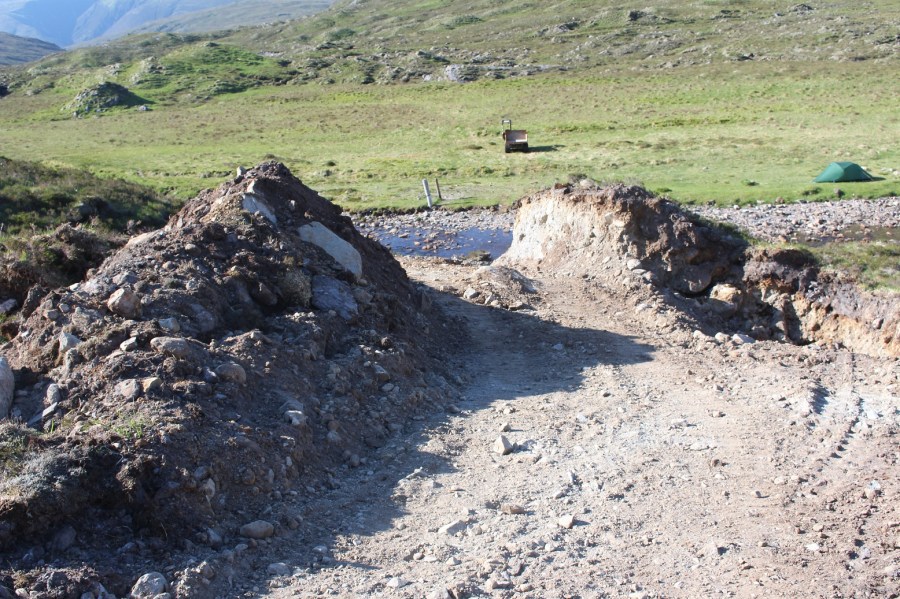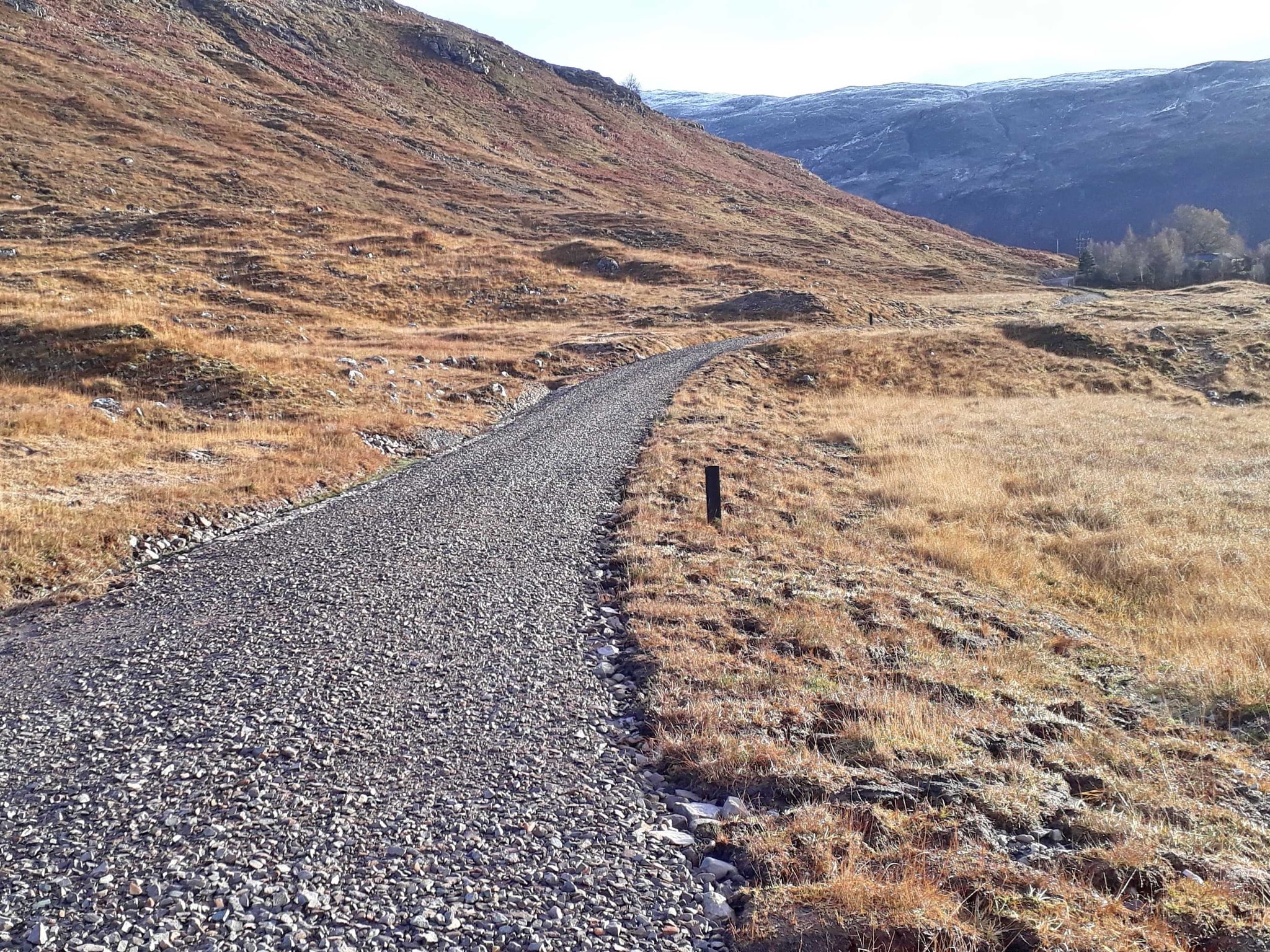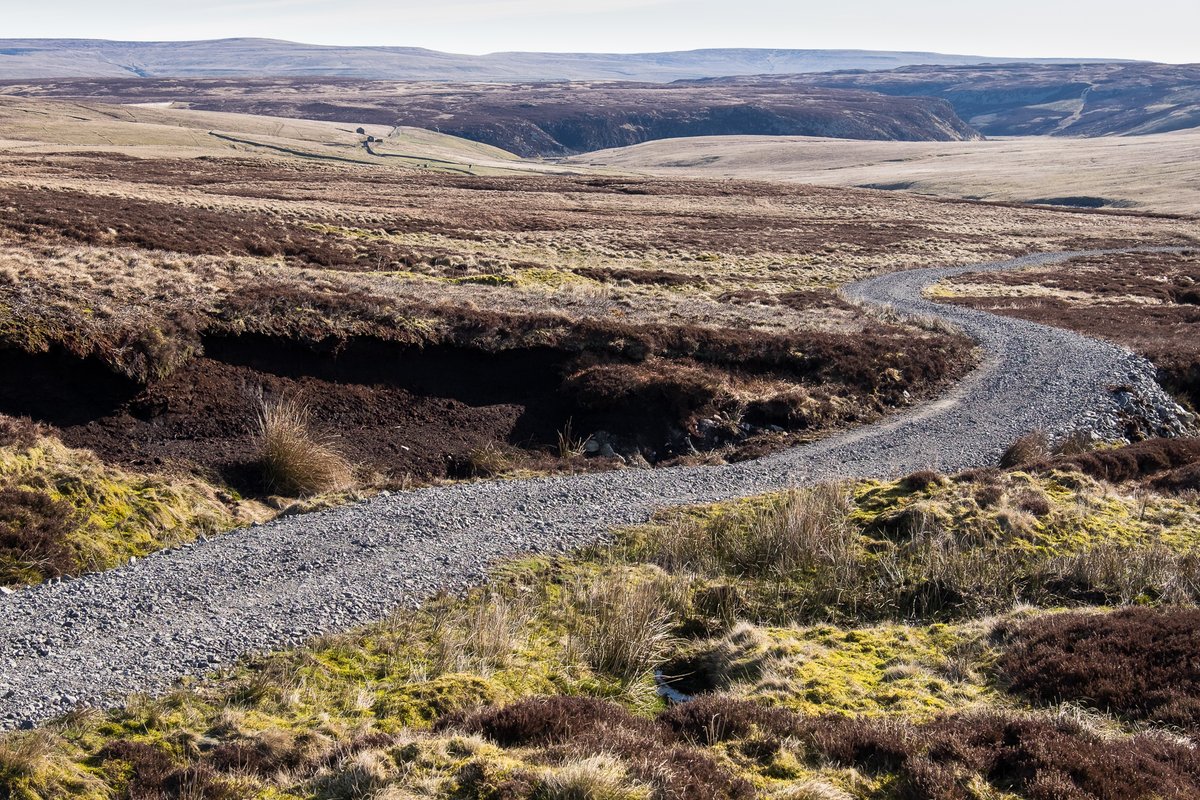A path is a conversation between walker and landscape, says outdoor writer John Burns, but bulldozed hill tracks disrupt that unique relationship.
By John Burns
The light is fading on this breezy September day as I shoulder my pack and turn towards the glen. In my mind I play out the walk ahead: I will follow the gentle track that leads away from the road to where it narrows as it begins to climb the hill, until it crosses the small bridge where I will walk the last few hundred yards to Coire Fionnaraich bothy. I have walked this way many times over the last 30 years; I greet this path that will carry me into the hills and the bothy beyond like an old friend.
As soon as I leave the road I feel uneasy. Something has changed. There is a new shiny steel gate across the track with freshly bulldozed earth leading up to it. My heart sinks – I know what’s coming, I’ve seen it so many times before. Beyond the gate my feet hit the hard, uncompromising gravel of a newly constructed road. Half a mile later there is a new bridge across the river and beyond that a building complete with satellite dish that sits in as much sympathy with the landscape as a branch of McDonald’s.
The gentle track and the narrow old path I looked forward to walking have gone, ripped from the ground by the jagged teeth of the earthmover. Instead there is a broad road ahead and even the slender path that began at the start of the hill climb has been subjugated to a drained and sanitised anonymity.
There is a plague in the Highland countryside, an infection that is changing the face of the Highlands forever. Just about everywhere I go – and I go lots of places – freshly bulldozed tracks head up our green and pleasant glens, leaving long, wicked, grey scars in their wake. Each time I see a freshly bulldozed track I feel a twinge of sadness, knowing that another quiet glen has passed into memory.
These tracks are trashing our landscape. I have seen them in the Monadhliath mountains, where a once wild landscape has been reduced to a bald desert pockmarked by wind farms and networked by hill tracks linking driven grouse moors for the enjoyment of the wealthy. I have seen them on the way to the sleepy bothy of Glen Buck, where a bank, once home to sand martins, was blasted aside by steel invaders. I have even seen them close to the remote bothy of Bearnais where only the hardiest hillwalker once trod. In March I spoke to the driver of an earthmover there who was appalled by the devastation of the broad highways of tracks he was working, and told me his job was to bury half these tracks as the original contractor had made them too wide. Every time I drive the road to the Highland village of Achnasheen I wince at the track above Ledgowan Lodge that stands out like a bloodied razor slash on the hillside, and has shown no sign of blending in with the landscape even six years after its construction.
“A path through the hills is not just a route from A to B. The line it takes, the way it turns around a bog, or seeks out the shallowest point in a stream to make dry-footed crossings, is the outcome of a conversation”
A coalition of nine leading Scottish environmental organisations is now calling for stronger laws to protect the country’s most iconic landscapes from these damaging vehicle tracks. Scottish Environment LINK Hilltracks sub-group has published its Changing Tracks report, following three years of gathering evidence into whether planning legislation is effectively managing the development of the highly visible tracks. The group argues that the proliferation of controversial upland tracks is ‘out of control’ and is calling for permitted development rights for ‘agricultural’ and ‘forestry’ tracks to be withdrawn as part of the new Planning Bill now being considered at Holyrood.
A major factor leading to the proliferation of these hill tracks is that, under current legislation, landowners are free to construct new roads pretty much wherever they want without needing to request planning permission. All they need to claim is that a track is for ‘agricultural purposes’. This boils down to the fact that if you put a few sheep on a hillside you can build a motorway to them.
Many landowners behave as though they have a God-given right to do exactly as they please with the land they own and its wildlife, even if they are dealing with some of our most iconic landscapes. They regard the law and planning restrictions as mere impediments to doing what they want, and either ignore regulations – or do their best to get round them – whenever they please. Many of these tracks are, in reality, constructed for sporting purposes, in other words to make the hills more accessible for paid clients to shoot deer or grouse. When the estate that created the infamous track above Achnasheen came up for sale the vendors boasted of 10 miles of hill tracks to make the deer stalking more accessible. Many Highland estates receive hundreds of thousands of pounds in ‘agri-environment’ subsidies – so, in some cases, we the taxpayers are funding the desecration of our hills.
“The path has been tamed, sanitised, robbed of its identity”
Currently, no planning permission is required if tracks are claimed to be for agricultural purposes, yet Changing Tracks finds evidence that many are almost certainly built mainly to support field sports, such as deer stalking and grouse shooting – which aren’t classed as agriculture.
A path through the hills is not just a route from A to B. The line it takes, the way it turns around a bog, or seeks out the shallowest point in a stream to make dry-footed crossings, is the outcome of a conversation. The course of a path through the landscape is the result of the passage of hundreds of years and thousands of feet moving in a dialogue with the landscape. We make contact with the earth through the soles of our feet and, in that moment of interaction, the earth speaks to us. All too often old ways, routes that have evolved over generations, are driven flat by the steel blade of the earthmover as it surges forward, crushing all conversation from the land.
The small path that wove its way in to Coire Fionnaraich bothy was the result of such a discussion between human and landscape. Now, drained and buried in gravel, that conversation is silenced. If you walk along that track now you will find the rocks that once tripped the unwary have gone, and the stream that would overtop your boots when the gales drove in great rainstorms from the Atlantic is neatly contained in a culvert. The path has been tamed, sanitised, robbed of its identity, and walkers’ feet are deaf to the earth beneath.
Now you can do something to help prevent the spread of these hill tracks across some of our most valuable landscapes. Follow this link to help contact your MSP and ask for their support in requiring hill tracks to be covered by the appropriate planning procedures. Planning procedures will give us the right to voice our objections. In many cases, in our National Parks for example, the assumption should be that any applications for new tracks will be turned down and, at last, we will be able to curb this devastation.
Read the report and contact your MSP.
https://www.ramblers.org.uk/get-involved/campaign-with-us/hilltracks-campaign.aspx
To see just how much money the tax payer pays your local landowner through the ‘Common Agriculture Policy’ (CAP) have a look here: http://cap-payments.defra.gov.uk/Download.aspx
John Burns is a mountaineer, storyteller and writer who has taken his one-man plays to the Edinburgh Fringe and toured them widely around theatres and mountain festivals in the UK. He is also a published author. His books The Last Hillwalker and Bothy Tales are available from Amazon and have both been shortlisted for TGO Outdoor Book of the Year.

Read his blog here: johndburns.com/blog
Header image © Ramblers












